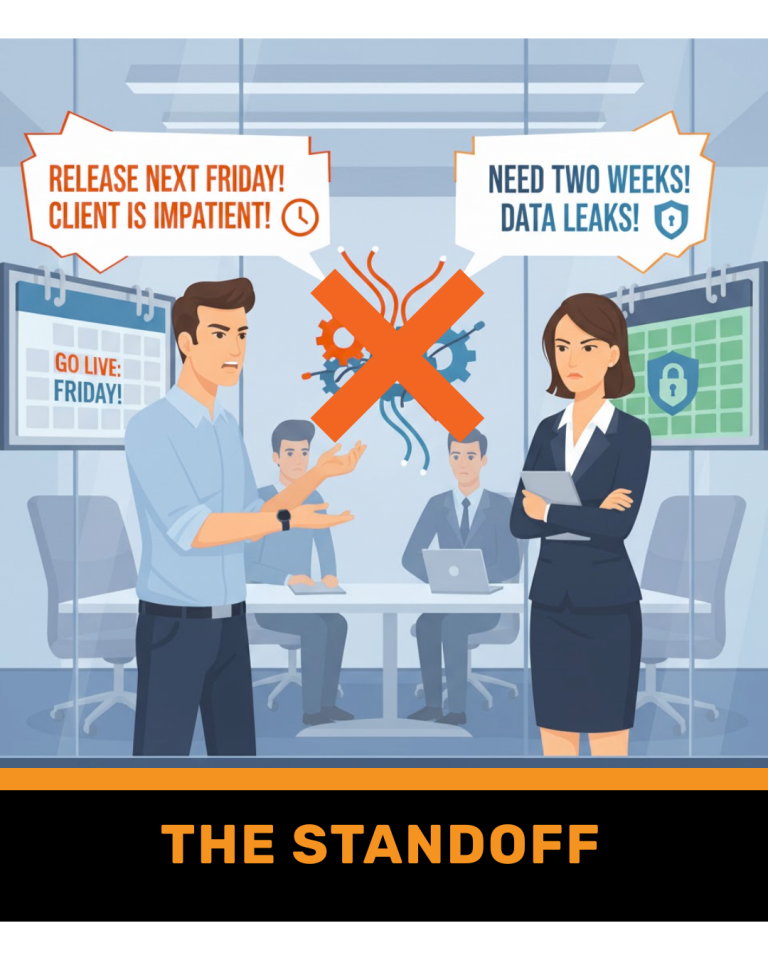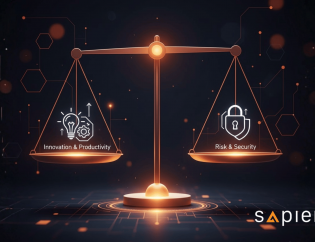Winning Without Defeating:
The Power of Principled Negotiation
Written by:
Senior Consultant
Sapience Consulting

💥 Conflict is Inevitable: The Standoff
In the fast-moving worlds of projects, agile delivery, and data protection, conflict is inevitable. Stakeholders want different outcomes, timelines clash, and sometimes regulations seem at odds with business goals.
Picture this: during a cross-department meeting, a project manager and a data protection officer are locked in a standoff.
🟥 The Position (The “What”)
Project Manager :
“We must release the new app next Friday — the client is already impatient.”
DPO :
“We can’t. Our security tests need another two weeks to ensure no personal data leaks.”
Tension fills the room. Both repeat their points louder, as if volume will change minds. They are stuck in a tug-of-war.
✨ The Turnaround: Focusing on Interests
Finally, someone breaks the cycle by asking:
“Why do you need the release date?”
“Why do you need the extra time?”

🟢 The Interest (The “Why”)
Project Manager’s explains :
“The client needs a demo for investors —
it doesn’t have to be the full app.”
The DPO explains:
“The risk lies only in the payment module —
the rest is already compliant.”
✅ The Win-Win Solution
By separating the People from the Problem and focusing on underlying Interests, they achieved a breakthrough in minutes:
Within minutes, they agree on releasing a limited demo version next Friday (no payment module) and rolling out the full version two weeks later. The client is happy, compliance is intact—and the team avoids a meltdown.
That’s the power of Principled Negotiation.
Born from Harvard’s Negotiation Project, this approach transforms negotiation from a tug-of-war into a joint problem-solving session. Instead of “I win, you lose,” the focus becomes “We both win, and the relationship survives.” So, what’s the magic formula?
🌟 The Four Golden Principles
Born from the Harvard Negotiation Project, this approach transforms negotiation from a tug-of-war into a joint problem-solving session. The focus shifts from “I win, you lose,” to “We both win, and the relationship survives.”
Here is the magic formula:
👤 ≠ ⚙️
1. Separate the People from the Problem
How many times have emotions derailed a crucial discussion? It’s easy to see the other party as the problem — especially when they block your sprint goals or challenge your compliance plan. But people have emotions, perceptions and pressures. Principled negotiation treats relationships and issues separately: deal with the issue directly while maintaining respect and trust. This isn't about ignoring feelings; it's about managing them so they don't hijack the negotiation. For project managers, this means focusing on the sprint goal, not the developer who missed a deadline. For DPOs, it means discussing data integrity, not the department head who overlooked a policy.
🎯vs.🗣️
The “Why” vs. The “What”
2. Focus on Interests, Not Positions
Positions are the what (e.g., "I want a three-month deadline"). Interests are the why (e.g., "because we need time to test without risking customer data"). Uncovering the underlying interests of all parties is like finding hidden treasure. By exploring the real why, you unlock truly creative and collaborative options that a simple yes/no can’t offer.
💡 & 🔗
Brainstorm & Connect
3. Invent Options for Mutual Gain
Don’t stop at the first solution that comes to mind! Brainstorm without commitment. This stage is about generating a wide range of possibilities before deciding. Think outside the box, explore different scales, timelines and resource allocations. For DPOs, this might mean finding innovative ways to balance data accessibility with robust privacy controls. For project managers, it's about finding win-win scenarios for resource allocation or stakeholder expectations. The more options you create, the higher the chance of finding an optimal solution that benefits everyone.
⚖️
Anchor to Standards
4. Insist on Using Objective Criteria
When opinions clash, anchor the discussion to standards everyone respects — regulations, industry benchmarks, proven frameworks. It’s harder to argue with GDPR, ISO standards, or agreed agile/project metrics than with personal preference. This depersonalises the decision-making process and fosters trust, leading to agreements that are not only acceptable but also perceived as equitable.
🎯 Why This Works in Your World
Principled Negotiation is not just a theory—it’s a high-value tool for your “goodies bag.” It helps you protect relationships while protecting outcomes, whether you’re sprinting toward a product launch or navigating a regulatory storm.| Role | How Principled Negotiation Empowers You |
| Project Manager | Lead with Influence, not authority. Resolve scope creep with less friction, align stakeholders on shared goals, and build stronger, more resilient teams. |
| Agile Practitioner | Tailor-made for Agile events. Facilitate more effective sprint planning, retrospectives, and backlog refinement by focusing on shared value and collaborative problem-solving. |
| Data Protection Officer | Be an Enabler, not a Blocker. Provides a robust framework for advocating for data protection without alienating key stakeholders, ensuring compliance is seen as a strategic advantage. |
In short, principled negotiation helps you protect relationships while protecting outcomes — whether you’re sprinting toward a product launch or navigating a regulatory storm.
“In negotiation, you’re not adversaries — you’re partners in solving a shared problem.”
I am so passionate about Principled Negotation that I own four books in the series written by the authors!- Fisher, R., Patton, B., Ury, W. (1992). Getting to Yes: Negotiating Agreement Without Giving In. Century Busines
As a trusted leader in professional development, Sapience empowers you to invest in your future.
Don’t wait – Explore our available funding and leverage our expertise to upskill without financial strain.










